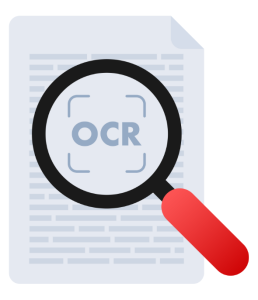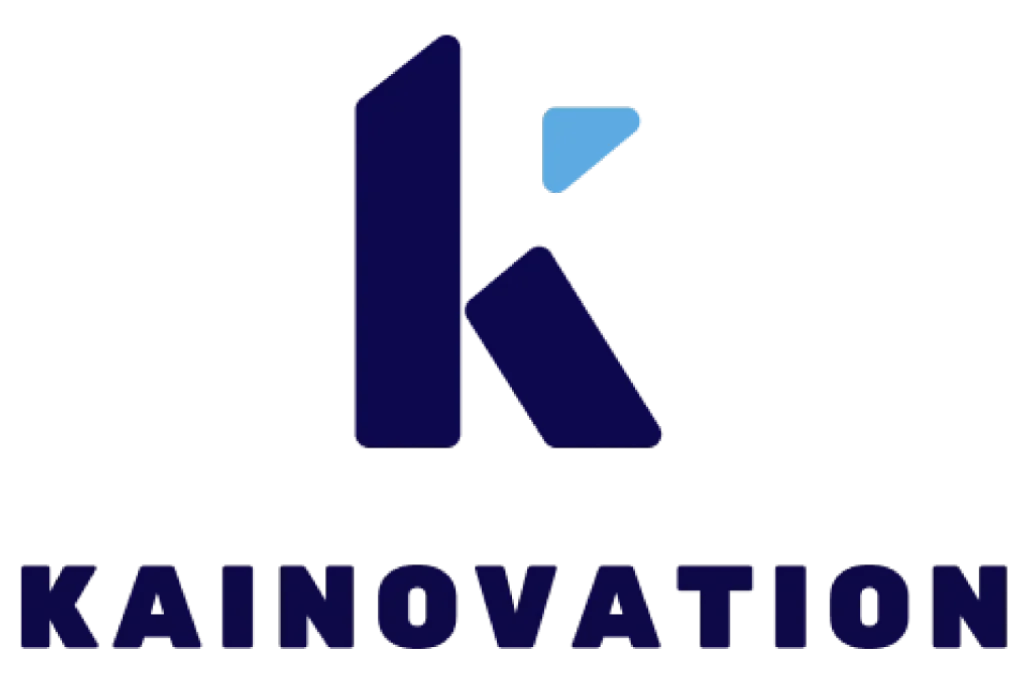In today’s digital landscape, verifying customer identities is not just a regulatory formality but a frontline defence against fraud, financial crime, and data breaches. Know Your Customer (KYC) procedures are essential for businesses to assess risk, meet compliance standards, and build secure customer relationships. However, traditional KYC processes are often slow, costly, and prone to human error. Optical Character Recognition (OCR) is a powerful technology that uses AI and machine learning to automate document verification, extract accurate data, and transform how industries such as banking, healthcare, and telecommunications approach identity validation. By bridging the gap between manual work and intelligent automation, OCR enhances compliance and improves the overall customer experience.
What is KYC?
Know Your Customer (KYC) is a process businesses use, particularly in the financial sector, to verify customer identities, assess their needs, and identify potential risks. It plays a key role in helping organisations protect themselves from misuse of services by enabling early detection of suspicious activity and ensuring compliance with legal standards.
The primary objectives of KYC are:
- Preventing identity theft: KYC stops identity theft by ensuring customers provide official, verifiable identification before
 gaining access to services.
gaining access to services. - Detecting money laundering and preventing the financing of terrorism: By confirming the legitimacy of customers and their financial activities, KYC makes it more difficult for criminals to move illicit funds or support unlawful organizations through legitimate channels.
- Mitigating fraud: Strong KYC checks help block attempts to create fake accounts or conduct deceptive transactions, protecting both the business and its clients.
- Regulatory compliance: Numerous international and national regulations mandate KYC procedures, and adherence is crucial for avoiding hefty penalties and reputational damage.
The scope of KYC extends beyond traditional banking. It now encompasses a wide range of regulated entities, including online payment processors, cryptocurrency exchanges, insurance companies, and even certain e-commerce platforms. By gaining a clear understanding of who their customers are, businesses can strengthen oversight and maintain safer, more transparent operations.
Problems Associated With Traditional KYC
Despite its importance, traditional KYC processes are often slow, error-prone, and expensive. Manual document collection and verification not only extend the onboarding time but also burden staff and increase operational costs. Key challenges include:
- Time-Consuming and Labour-Intensive
- High Operational Costs
- Prone to Human Error
- Inconsistent Verification
- Poor Customer Experience
- Scalability Challenges
- Data Security Risks
Time-Consuming and Labour-Intensive: Traditional KYC procedures often require manual verification of physical documents, which can significantly delay the onboarding process. This not only slows down customer acquisition but also diverts staff from other critical tasks. The cumulative effect is a bottleneck that hampers operational efficiency and customer satisfaction.
High Operational Costs: Maintaining a manual KYC system involves substantial expenses, including staffing, training, and physical storage of documents. These costs can escalate quickly, especially for businesses experiencing rapid growth. Moreover, the lack of automation means that scaling the process requires proportional increases in resources, leading to diminishing returns.
Prone to Human Error: Manual data entry is inherently susceptible to mistakes such as typos or misinterpretation of information. These errors can lead to inaccurate customer profiles, which may result in compliance breaches or financial losses. Additionally, correcting these mistakes often requires additional time and resources, further straining operations.
Inconsistent Verification: When verification relies on human judgment, there’s a risk of inconsistency in how policies are applied. Different staff members might interpret guidelines differently, leading to uneven scrutiny of customer information. This variability can create vulnerabilities that fraudsters might exploit.
Poor Customer Experience: Lengthy and cumbersome KYC processes can frustrate customers, leading to a negative perception of the business. The requirement to submit multiple documents and endure long wait times can deter potential clients. In today’s fast-paced environment, customers expect swift and seamless onboarding experiences.
Scalability Challenges: As a business grows, the volume of KYC checks increases, putting pressure on existing manual systems. Without automation, scaling up requires hiring more staff and expanding infrastructure, which may not be sustainable. This limitation can impede a company’s ability to expand efficiently.
Data Security Risks: Storing physical documents poses significant security concerns, including the risk of loss, theft, or damage. Unauthorised access to sensitive information can lead to data breaches and legal repercussions. Ensuring the security of physical records often requires stringent controls and monitoring, adding to operational complexity
OCR Explained
Optical Character Recognition (OCR) is a technology that uses automation, computer vision, and AI to convert printed or handwritten documents, images, and scanned files into machine-readable, editable text. Modern OCR systems go beyond mere text extraction. Using machine learning and artificial intelligence, they can understand layouts, recognise handwriting, and even detect fraudulent alterations. This makes OCR especially valuable in sensitive processes like Know Your Customer (KYC), where ensuring the authenticity and accuracy of customer information is critical.
How OCR Transforms the KYC Process
How OCR Automates Document Processing
OCR allows users to upload images or scans of documents such as identification cards or proof of address. The system automatically detects and extracts key fields like full name, date of birth, ID number, and expiration date. This automation removes the need for manual data entry, reducing the workload for staff and shortening the time required to process new customer information.
How OCR Improves Data Accuracy
Advanced OCR systems use intelligent algorithms and error-correction mechanisms to enhance the accuracy of the extracted information. These tools help reduce the risk of human error commonly associated with manual entry. As a result, the data collected is more consistent and reliable, which is vital for maintaining the integrity of customer records and complying with regulatory standards.
How OCR Improves Efficiency and Reduces Costs
By automating repetitive tasks such as data entry and verification, OCR reduces the need for manual intervention. This leads to substantial cost savings by minimising labour expenses and freeing up staff to focus on higher-value tasks. The increased speed and accuracy of OCR also improve operational efficiency across departments.
How OCR Enhances Security
Digitising documents with OCR helps reduce dependence on physical paperwork, which can be lost, stolen, or tampered with. Digital files are easier to manage and store securely. Additionally, most modern OCR systems come with built-in security features such as user authentication and role-based access controls. These features ensure that only authorised personnel can access or edit sensitive information, lowering the risk of data breaches and unauthorised exposure.
How OCR Improves the Customer Experience
OCR streamlines the entire onboarding process, making it faster and more convenient for customers. By eliminating the need to fill out forms or wait for manual verification, customers enjoy a smoother, more responsive service. This improved experience helps increase customer satisfaction and loyalty while reducing the likelihood of abandonment during registration.
How OCR Supports Scalability and Flexibility
 OCR-based KYC systems are designed to handle increasing volumes of customer data without requiring a proportional increase in staff. This makes them ideal for growing businesses or institutions with fluctuating onboarding demands. Moreover, these systems are adaptable and can process various types of identity documents from multiple jurisdictions, ensuring compliance with different regional regulatory requirements.
OCR-based KYC systems are designed to handle increasing volumes of customer data without requiring a proportional increase in staff. This makes them ideal for growing businesses or institutions with fluctuating onboarding demands. Moreover, these systems are adaptable and can process various types of identity documents from multiple jurisdictions, ensuring compliance with different regional regulatory requirements.
OCR in KYC Across Industries
Financial Services Sector: In banking, OCR is fundamental for opening new accounts, whether for individual customers or corporate clients. When a customer applies for a checking account, a loan, or a credit card, OCR rapidly extracts critical data like names, addresses, dates of birth, and identity document numbers from passports, national ID cards, and utility bills. This not only cuts down the time required for manual data entry but also significantly reduces human error, improving the accuracy of customer profiles. For wealth management firms and investment banks, OCR helps in verifying the identities of high-net-worth individuals and corporate entities, ensuring compliance with complex anti-money laundering (AML) regulations and preventing the financing of illicit activities.
Telecommunications Industry: When a new subscriber wishes to activate a mobile phone contract, secure an internet connection, or set up a business communication line, rapid identity verification is essential. OCR allows telecom providers to swiftly scan a customer’s driver’s license or national ID card at the point of sale, whether in a retail store or via an online application. The system instantly extracts the necessary demographic data and document details, cross-referencing it with internal databases or external verification services. This efficiency not only accelerates customer activation but also plays a crucial role in preventing SIM card fraud, identity theft related to phone services, and the use of telecommunication services for illicit purposes, ensuring regulatory compliance.
Hospitality and Travel Sectors: For hotels, OCR streamlines the check-in process by allowing reception staff to quickly scan a guest’s passport or national ID. The system populates the registration form automatically, minimising queue times and enhancing the guest experience. In the travel sector, airlines and travel agencies utilise OCR to verify passenger identities against their booking information and government-issued travel documents (like visas and passports) before boarding or ticketing. This capability is vital for international travel, where stringent security checks are mandated, ensuring passenger manifest accuracy and contributing to global security protocols. Cruise lines also benefit, accelerating embarkation and disembarkation procedures by efficiently verifying passenger identities.
Real Estate Industry: In a sector characterised by high-value transactions and legal complexities, OCR is proving invaluable for KYC. During property sales, rentals, or mortgage applications, real estate agencies and legal firms need to verify the identities of all parties involved: buyers, sellers, tenants, and landlords. OCR automates the extraction of details from identity documents, proof of address (e.g., utility bills), and even company registration documents for corporate clients. This ensures legal compliance, helps in detecting potential fraudulent transactions, and mitigates risks associated with money laundering in property dealings, making the entire process more secure and efficient.
Healthcare Sector: While patient privacy is paramount, identity verification is still a critical component in healthcare for accurate record-keeping, billing, and preventing fraud. Hospitals, clinics, and pharmacies can deploy OCR to quickly process patient IDs and insurance cards during registration. This ensures that the correct patient record is accessed or created, reduces administrative burdens, and helps prevent medical identity theft, where someone might try to obtain services using another person’s identity. For insurance companies within healthcare, OCR expedites the processing of new policy applications and claims by rapidly extracting information from various client documents, enhancing operational efficiency and service delivery.
Kainovation has created an advanced OCR tool. Watch the demo below or click the link to try it yourself.
Conclusion
As digital demands increase and regulatory requirements become more complex, the need for fast, accurate, and scalable KYC solutions grows stronger. OCR technology meets this need by automating data extraction, improving accuracy, reducing costs, and enabling smoother onboarding processes. Many industries are adopting OCR to modernize their KYC practices and stay ahead of fraud and compliance risks. The future of identity verification is clear: intelligent, automated, and powered by OCR technology.
References
- Gupta, A., Dwijendra Nath Dwivedi, & Shah, J. (2023). Applying Machine Learning for Effective Customer Risk Assessment. Future of Business and Finance, 65–78. https://doi.org/10.1007/978-981-99-2571-1_6
- Saikiran Subbagari. (2023). Leveraging Optical Character Recognition Technology for Enhanced Anti-Money Laundering (AML) Compliance. SSRG International Journal of Computer Science and Engineering, 10(5), 1–7. https://doi.org/10.14445/23488387/ijcse-v10i5p102
- Siddharth Bondarde, Ghadge, P., Saldanha, A., Markad, A., & Varpe, D. (2022). Artificial Intelligence-Based OCR. Lecture Notes in Networks and Systems, 516, 329–338. https://doi.org/10.1007/978-981-19-5221-0_33
We are Kainovation Technologies, Leading the way in AI, ML, and Data Analytics. Our innovative solutions transform industries and enhance business operations. Contact us for all your AI needs.

